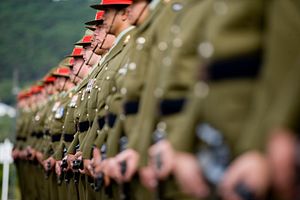On Tuesday, New Zealand released its new Defense Capability Plan (DCP). The document outlines the country’s broad strategic priorities on defense matters. New Zealand Defense Minister Jonathan Coleman notes that the 2014 DCP reflects well on the New Zealand Defense Force’s (NZDF) capabilities. The 2014 DCP is a follow up to the 2011 document.
“The 2014 Defence Capability Plan describes the new equipment and assets that the NZDF will purchase over the next decade. It resets capability and investment priorities, and focuses on the NZDF’s ability to deliver joint operations, and grow combat and support capabilities,” noted Coleman.
The DCP emphasizes enhancing the NZDF’s “proficiency at joint operations and growing its combat, combat support and combat service support capabilities.” The shortest term goal for the NZDF as explained in the DCF is to achieve Joint Taskforce Capability by 2015. In the medium term, by 2020, the NZDF will focus on enhancing its combat capability. According to the DCP, the NZDF will be charged with:
- defending New Zealand’s sovereignty;
- discharging [New Zealand’s] obligations as an effective ally of Australia;
- contributing to and, where necessary, leading peace and security operations in the South Pacific;
- making a credible contribution in support of peace and security in the Asia-Pacific region;
- protecting New Zealand’s wider interests by contributing to international peace and security, and the international rule of law;
- contributing to whole of Government efforts to monitor the international strategic environment; and
- being prepared to respond to sudden shifts and other disjunctions in the strategic environment.
The DCP sets out some of New Zealand’s longer term procurement concerns. The country will have to replace its aging C-130H and Boeing 757 fleets “in the early 2020s.” Additionally, ANZAC frigates and the highly versatile P-3K2 Orion maritime surveillance aircraft “will also reach the end of their service life in the 2020s.”
“It is vital that the NZDF has well trained personnel with the right equipment to deliver on the Government’s expectations. The Government is committed to investing in the NZDF’s capabilities by upgrading equipment and developing its workforce. A number of significant capability investments have been made in the past year, and further investment is planned,” said Coleman. He additionally emphasized the need for New Zealand to modernize its defense without fiscal irresponsibility: “While defense funding has increased, stringent management must continue. The NZDF is committed to making ongoing savings and efficiencies as part of its future planning. This is crucial for the NZDF to sustain its capability.”
The DCP notes New Zealand’s recent defense acquisitions, including a series of NH90 helicopters and three SH-2G(I) Seasprites (expected to arrive in early 2015). The NH90s are replacing the NZDF’s current fleet of Iroquois helicopters, according to the DCP. While the DCP does not discuss unmanned aerial systems (UAS) in great detail, it is worth noting that New Zealand’s former Chief of Air Force said that while the NZDF plans to add these to its current capabilities, it sees their role as “complementary” to existing air assets. The DCP sets out a vision and goal for the NZDF in 2035; it aspires to exist as “an integrated defense force tailored for future security challenges,” and to “continue to demonstrate expertise in the Maritime, Land, Air and Information domains delivering operational effects in innovative ways.”

































